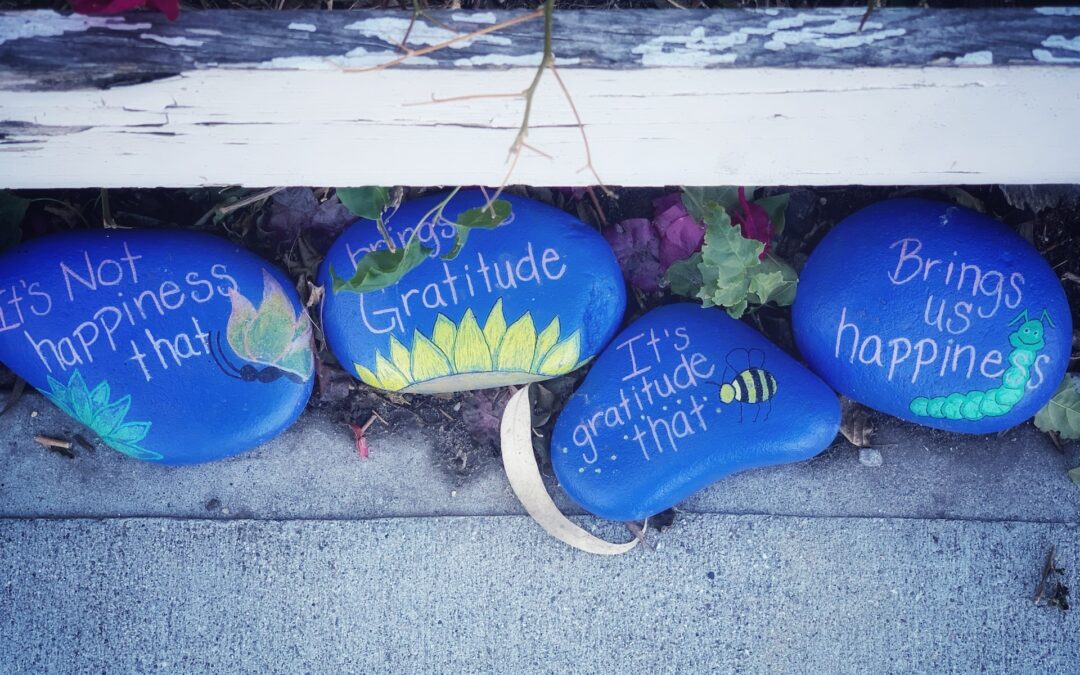
Coaching, Creative, Self-Care, Self-Development
Journaling is the practice of writing down thoughts, feelings, experiences, and reflections on a regular basis. It can take many forms, from freeform writing to structured prompts, and it can be done using pen and paper or digitally.
At its core, journaling is a tool for self-expression, self-reflection, and personal growth. It allows individuals to explore their inner thoughts and emotions, make sense of their experiences, and gain insight into their lives. Journaling can also help improve mental health by providing an outlet for stress, anxiety, and other emotions.
Why Journaling Matters
Journaling offers a myriad of benefits for both the mind and spirit, including:
- Self-Reflection: Journaling provides a safe and private space to explore your thoughts, feelings, and experiences, helping you gain insight into your inner world and make sense of your emotions.
- Clarity and Focus: Writing down your thoughts can help clarify your thoughts, identify patterns, and gain perspective on challenging situations, allowing you to make more informed decisions and navigate life with greater ease.
- Emotional Release: Journaling serves as a powerful outlet for expressing and processing emotions, relieving stress, and releasing pent-up feelings in a healthy and constructive way.
- Goal Setting and Accountability: Keeping a journal can help you set goals, track your progress, and hold yourself accountable for taking action towards your aspirations, fostering motivation and personal growth.
- Creative Expression: Journaling is a creative act that allows you to experiment with different writing styles, prompts, and formats, sparking inspiration and expanding your creative horizons.
Types of Journals to Explore
There are countless types of journals you can explore, each with its own unique focus and purpose. Here are a few popular options to consider:
- Daily Reflection: A journal for daily reflection allows you to capture your thoughts, experiences, and gratitude each day, providing a snapshot of your life over time.
- Gratitude Journal: A gratitude journal is a place to cultivate a mindset of appreciation by regularly writing down the things you’re thankful for, big and small.
- Dream Journal: Keep a dream journal by your bedside to record your dreams upon waking, exploring their symbolism and uncovering insights into your subconscious mind.
- Travel Journal: Document your adventures and experiences while traveling, capturing memories, reflections, and snapshots of the places you visit.
- Freeform journaling: This involves writing whatever comes to mind without any specific structure or prompts. It’s a way to let thoughts flow freely onto the page.
- Goal-oriented journaling: Here, individuals set specific goals and track their progress towards achieving them. They may also brainstorm ideas and action plans to help them reach their goals.
- Creative journaling: A creative journal is a space for artistic expression, incorporating doodles, sketches, collages, and other visual elements alongside your written reflections. It can also include using other creative methods alongside writing to express oneself and explore thoughts and feelings.
How to Start Journaling
Getting started with journaling is easy and accessible to anyone, regardless of age or experience. Here are some tips to help you begin:
- Choose Your Tools: Select a journal or notebook that speaks to you, whether it’s a classic leather-bound journal, a colorful notebook, or a digital journaling app.
- Set Aside Time: Carve out dedicated time each day or week to sit down and write in your journal, whether it’s first thing in the morning, before bed, or during your lunch break.
- Start Small: Begin with a simple prompt or question to get the words flowing, such as “What am I feeling grateful for today?” or “What’s on my mind right now?”
- Write Freely: Don’t worry about spelling, grammar, or punctuation—this is your space to express yourself authentically and without judgment.
- Experiment and Explore: Get creative with your journaling practice by experimenting with different prompts, techniques, and formats to find what resonates with you.
Journaling can be a highly personal practice, and there are no strict rules or guidelines to follow. The most important thing is to find a journaling style that resonates with you and to make it a regular part of your routine. Whether it’s a daily habit or something you do whenever you feel the need, journaling can be a valuable tool for self-discovery and personal development.

Coaching, Creative, Entrepreneurs, Self-Care
Setbacks are an inevitable part of life. Whether it’s a rejection, failure, or unexpected obstacle, facing challenges on our journey toward our goals is not only common but essential for growth and development. However, how we respond to these setbacks ultimately determines our success. Instead of allowing setbacks to derail our progress and diminish our motivation, we can choose to use them as opportunities for learning, growth, and resilience. Here are some strategies for remaining self-motivated after experiencing setbacks:
- Acknowledge Your Emotions: It’s natural to feel disappointed, frustrated, or discouraged after a setback. Instead of suppressing these emotions, allow yourself to experience and acknowledge them fully. Recognize that setbacks are a normal part of the journey and that feeling upset or disappointed is okay. By acknowledging your emotions, you can begin to process them in a healthy way and move forward with a clearer mindset.
- Reframe the Setback as a Learning Opportunity: Instead of viewing setbacks as failures, reframe them as valuable learning opportunities. Ask yourself what you can learn from the experience and how you can use it to improve and grow. Perhaps the setback revealed areas where you can strengthen your skills, adjust your approach, or broaden your perspective. Embrace the lessons learned from the setback and use them to fuel your motivation moving forward.
- Focus on What You Can Control: It’s easy to get caught up in dwelling on things beyond our control, leading to helplessness and frustration. Instead, focus your energy and attention on what you can control – your attitude, actions, and responses to the setback. Take proactive steps to address any factors within your control and make positive changes that will propel you forward.
- Set Realistic Goals: After experiencing a setback, it’s important to reassess your goals and expectations to ensure they are realistic and attainable. Break down your larger goals into smaller, manageable steps and focus on making progress one step at a time. Celebrate small victories along the way to boost your confidence and momentum.
- Cultivate Resilience: Resilience is the ability to bounce back from setbacks and adversity stronger than before. Cultivate resilience by developing a growth mindset – the belief that challenges are opportunities for growth and learning. Practice self-compassion and kindness toward yourself, and remind yourself of past successes and challenges you’ve overcome. Surround yourself with supportive friends, family, or mentors who can offer encouragement and perspective during difficult times.
- Stay Committed to Your Why: Remind yourself why you set your goals in the first place and your vision for your future. Reconnect with your sense of purpose and passion, and let it fuel your determination to keep moving forward despite setbacks. Remember that setbacks are temporary obstacles on the path to success, and with persistence and perseverance, you can overcome them.
Setbacks are a natural and inevitable part of any journey toward success. Instead of allowing setbacks to derail your motivation, use them as opportunities for growth, learning, and resilience. By acknowledging your emotions, reframing setbacks as learning opportunities, focusing on what you can control, setting realistic goals, cultivating resilience, and staying committed to your why, you can maintain self-motivation and continue making progress toward your goals, no matter what challenges may arise.

Coaching, Self-Development, Wellness
In the pursuit of our long-term goals, it’s easy to become consumed by the vision of our desired future. We invest our time, energy, and focus into chasing after success, believing that our happiness hinges upon reaching that ultimate destination. However, in our relentless pursuit of the future, we often overlook the abundance and fulfillment that exists in our daily lives.
Gratitude Makes You Happier
Neurologists have learned that feelings of gratitude actually change the way your brain works. When you are consciously aware of all the wonderful things in your life, you are happier and more content. When you are happy and feeling good about your life, it’s easier to believe that more good things await you down the road.
Gratitude Lowers Stress
A life filled with the struggle always to be better will lead to a life of stress. Yes, you want to reach your goals. You want to unlock all the potential that’s inside you. But finding a way to balance this desire with gratitude for what you’ve already accomplished and what you have in your life today is also important. When constantly pushing yourself forward, believing you aren’t good enough today is easy. Focusing on what you must be grateful for today lowers your stress level and helps you enjoy the journey to your ultimate goal.
Gratitude Makes You More Optimistic
Believing the grass is always greener on the other side is a sure way to ensure your dissatisfaction with life. It makes you feel like you may never get the life you want. This pessimism just makes everything in life harder. You may even just give up on your dreams because you don’t believe you can attain them. Keeping a grateful mindset offers a way to enjoy life now and look forward to the future once your goals are realized.
While long-term goals provide direction and purpose, they should not overshadow the importance of living in the present moment and expressing gratitude for what we already have achieved. Here’s why striking a balance between long-term aspirations and daily gratitude is essential for both happiness and success:
- Finding Joy in the Journey: While achieving long-term goals can bring a sense of accomplishment, true happiness lies in the journey itself. By embracing the process and finding joy in the small victories along the way, we can experience fulfillment and satisfaction in the present moment, rather than waiting for some distant future to bring us happiness.
- Building Resilience: Acknowledging and appreciating our past achievements fosters resilience and confidence in our ability to overcome challenges and achieve future goals. Reflecting on how far we’ve come reminds us of our strengths and capabilities, empowering us to face obstacles with optimism and determination.
- Fostering Positive Mindset: Practicing gratitude shifts our focus from what we lack to what we already have, fostering a positive mindset and outlook on life. When we approach our goals from a place of abundance rather than scarcity, we attract more opportunities for growth and success into our lives.
- Enhancing Well-Being: Research has shown that expressing gratitude has numerous benefits for our physical, mental, and emotional well-being. From reducing stress and anxiety to improving sleep and overall happiness, expressing gratitude for the blessings in our lives promotes holistic health and wellness.
So how can we strike a balance between our long-term goals and daily gratitude? Here are some practical strategies to integrate gratitude into your daily life:
- Daily Reflection: Take a few moments each day to reflect on what you’re grateful for, whether it’s your health, relationships, accomplishments, or simple pleasures like a beautiful sunset or a delicious meal.
- Express Appreciation: Don’t hesitate to express gratitude to others for their support, kindness, or contributions to your life. A heartfelt thank you can strengthen relationships and cultivate a culture of positivity and appreciation.
- Celebrate Small Wins: Acknowledge and celebrate the small victories and milestones you achieve along the way toward your long-term goals. Each step forward, no matter how small, is worthy of recognition and celebration.
- Practice Mindfulness: Incorporate mindfulness into your daily routine to stay grounded in the present moment and develop awareness of the beauty and abundance surrounding you.
Obtaining a grateful spirit doesn’t take much time and effort, but it makes a huge difference in your life. Start by keeping a small notebook with you or using an app on your phone to note the little things that happen throughout your day for which you are grateful. Some people prefer to keep a gratitude journal by their bed and add a short list of things that they are grateful for that day. Give it a try if you feel you’ve been too focused on a goal, making you unappreciative of what you already have.
While long-term goals provide direction and purpose, true happiness is found in embracing the journey and expressing gratitude for the blessings in our lives. By striking a balance between our aspirations for the future and appreciation for the present moment, we can experience greater fulfillment, resilience, and well-being on our path to success. So, as you pursue your long-term goals, remember to pause, reflect, and express gratitude for the abundance and joy that already exists in your life.

Coaching, Self-Development
Are you frittering away your day?
It sounds like a funny thing to ask, like something your grandmother might say, but think about it. When we become caught up in small, nonsensical tasks where we spend the day spinning our wheels, it could very well be said that we’re frittering. Is this something you really want to be doing? In a world filled with distractions and endless to-do lists, it’s easy to fall into the trap of busyness without purpose. But imagine what could happen if you redirected that energy towards activities that actually move you closer to your dreams.
Instead of succumbing to the allure of small, meaningless tasks, why not prioritize your time and focus on what truly matters? It’s time to shift gears and start getting Important Stuff Done. It’s time to get out of your own way and take charge of your life. Here are some quick tips to help you make every moment count:
-
Set Clear Goals: Begin by defining success for yourself. Whether you’re advancing in your career, pursuing a passion project, or improving your health, clarity on your objectives will guide your actions.
-
Prioritize Tasks: Not all tasks are created equal. Identify the activities that align most closely with your goals and tackle them first. This ensures that you’re making progress on what matters most rather than getting bogged down in trivial pursuits.
-
Minimize Distractions: Take control of your environment to minimize distractions. Turn off notifications, designate specific times for checking email and social media, and create a workspace that fosters focus and productivity.
-
Practice Time Management: Efficient use of time is essential for accomplishing your goals. Break your day into manageable chunks, schedule time for important tasks, and avoid multitasking, which can lead to decreased productivity and increased stress.
-
Embrace Strategic Procrastination: Sometimes, procrastination can be a strategic tool. Instead of avoiding important tasks altogether, prioritize them over less critical activities. Procrastinating on less important tasks creates space to focus on what truly matters.
-
Delegate and Outsource: You don’t have to do it all yourself. Delegate tasks that others can handle more effectively, freeing up your time and energy for high-impact activities. Whether you hire a virtual assistant or enlist the help of a colleague, don’t be afraid to ask for support.
-
Celebrate Progress: Recognize and celebrate your achievements along the way. Break your goals into smaller milestones and acknowledge each as you reach them. This boosts morale and reinforces your commitment to achieving your dreams.
By implementing these strategies, you can stop frittering away your days and start making meaningful progress toward your goals. Remember, every moment is an opportunity to take charge of your life and create the future you desire. So why wait? Start getting Important Stuff Done today!

Coaching, Self-Development, Wellness
We’ve all been there – faced with a daunting task or uncomfortable subject, our natural inclination is often to avoid it altogether. Whether it’s procrastinating on a difficult project or dodging thoughts about a painful experience, avoidance can seem like the path of least resistance. But while it may provide temporary relief, the long-term consequences of avoidance can be far more damaging than the discomfort it seeks to alleviate.
Avoidance comes in many forms, from procrastination and distraction to outright denial. But regardless of how it manifests, the underlying mechanism is the same: the desire to escape or avoid feelings of discomfort, anxiety, or fear. However, what begins as a coping mechanism can quickly spiral into a cycle of increased stress and decreased resilience.
When we avoid confronting difficult tasks or uncomfortable emotions, we miss out on valuable opportunities for growth and learning. Instead of building resilience and coping skills, we remain stuck in a state of avoidance, perpetuating our feelings of anxiety and stress.
So, how can we break free from the cycle of avoidance and cultivate a mindset of resilience and courage? Here are some strategies to consider:
- Acknowledge Your Feelings: The first step in confronting avoidance is acknowledging and accepting your feelings, no matter how uncomfortable they may be. Recognize that avoidance is a natural response to stress and fear but is not a productive or sustainable solution.
- Identify Triggers: Pay attention to the situations or thoughts that trigger your avoidance behavior. Is it a specific task, topic, or emotion? By identifying your triggers, you can better understand the root cause of your avoidance and develop strategies to address it.
- Break Tasks into Manageable Steps: Overwhelming tasks are often a primary driver of avoidance. Break large tasks into smaller, more manageable steps and tackle them individually. This makes the task feel more achievable and reduces feelings of overwhelm and anxiety.
- Practice Mindfulness: Mindfulness techniques can help you stay present and engaged with uncomfortable thoughts and emotions without judgment or avoidance. Whether through meditation, deep breathing, or simply bringing awareness to the present moment, mindfulness can help you build resilience in the face of adversity.
- Seek Support: Don’t be afraid to reach out for support from friends, family, or a professional counselor. Talking about your feelings and experiences with others can provide valuable perspective and help you navigate difficult emotions more effectively.
- Celebrate Progress: Celebrate small victories along the way, no matter how minor they may seem. Each step forward, no matter how small, is a testament to your resilience and courage.
By confronting avoidance head-on and embracing discomfort as an opportunity for growth, you can cultivate greater resilience and build the skills necessary to navigate life’s challenges with courage and grace. Remember, avoidance may provide temporary relief, but true resilience comes from facing challenges with honesty, vulnerability, and determination.





